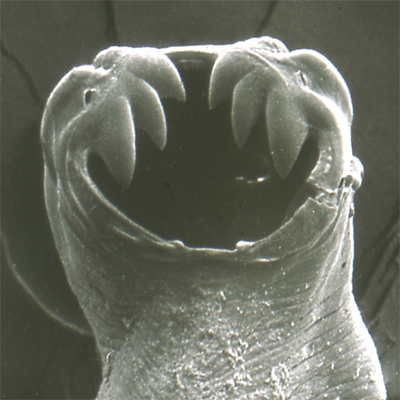
THE MINOR PHYLA
The minor invertebrate phyla which include most parasitic animals:Most of these phyla comprise inconspicuous and little known animals, which appeared before the two main streams of evolution diverged. They are often grouped together as the ‘minor’ phyla, presumably because their members are generally too small to be seen with the naked, human eye. These animals are rarely seen as they usually live in secluded aquatic or terrestrial microhabitats or as parasites, hidden away in other animals or plants. In spite of their inconspicuous habits, these animals are both numerous and important — as members of food chains or as parasites of economic, veterinary or medical importance.
The features used to understand how these animals are related to each other and to other invertebrate phyla include the formation of the body cavity and the nature of their larval forms.
These animals are displayed here according to their way of life to show how different phyla evolved to meet the different demands of parasitism, of living between grains of sand, mud or soil, of a sessile or burrowing existence. Professor J. H. Ashworth was very interested in these animals and collected many of our specimens.
The phyla are grouped as:
|
 |
| PROTOZOA | PARASITIC WORMS | MEIOFAUNA | FREE-LIVING MARINE WORMS | LOPHOPHORATE COELOMATES |






